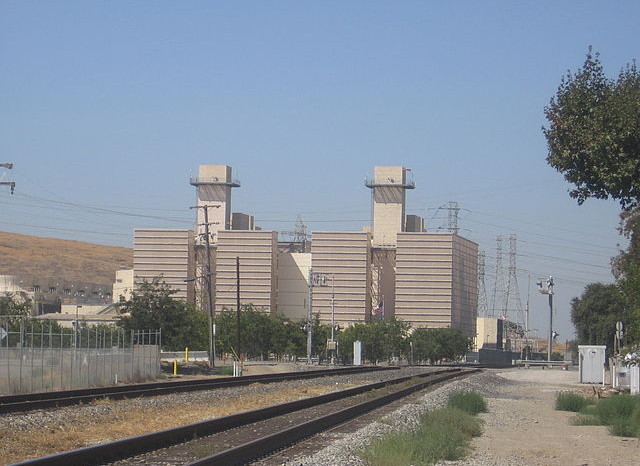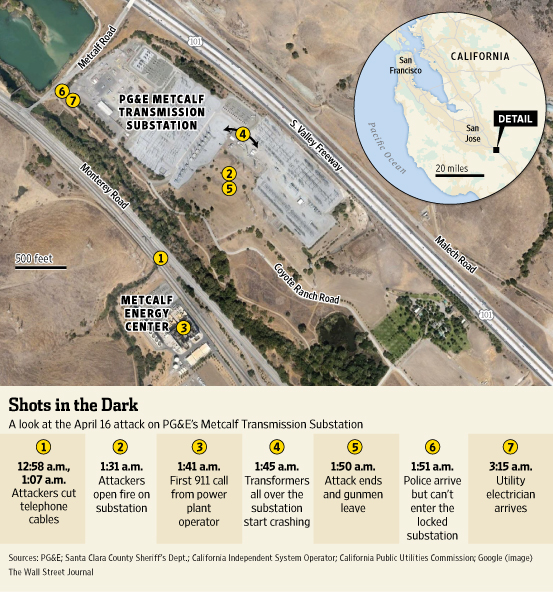Has Qatar turned Away from Islamist Support in the Middle East?
Yesterday, The Wall Street Journal published an intriguing analysis by Yaroslav Trofimov of the of Qatar’s apparent withdrawal from being a broker in the murky world of Middle East peace and Islamist causes, “Qatar Scales Back Role in Middle East Conflicts.” Trofimov noted:
From mediating in Lebanon and Sudan to helping rebels in Libya and Syria and backing the Palestinian group Hamas, Qatar has been involved in virtually every Middle Eastern flash point. But, under pressure from bigger neighbors Saudi Arabia and the United Arab Emirates, it has moved in recent weeks to distance itself from its traditional posture of championing Islamist movements—particularly the Muslim Brotherhood—in Egypt and elsewhere.
“The Qataris were a little bit shaken about how much blowback they have had,” said Abdullah Baabood, director of the Gulf Studies Center at Qatar University. “The recent events show they have overstretched themselves. They will now pick their battles and focus on what serves best their strategic interests.”
Trofimov drew attention to some demonstrable turns of events in December 2014 following the dust up in March when envoys from three Arab States in the Gulf Cooperation Council (GCC), Bahrain, the UAE and Saudi Arabia withdrew their Ambassadors. In November the UAE followed Saudi Arabia and listed the Muslim Brotherhood and affiliates Hamas, CAIR and the Muslim American Society in the US as terrorist organizations. Trofimov noted the turnabout:
After their threats to boycott a summit of Gulf monarchies in Doha this month, Qatar revised its stance on the critical point of disagreement—how to treat the Muslim Brotherhood and the current Egyptian leadership, which ousted the Islamist group from power last year.
Having expelled several Egyptian Muslim Brotherhood leaders ahead of the summit, Qatar sent a senior envoy to Egypt on Dec. 20 to seek a rapprochement with President Abdel Fattah El -Sisi.
Two days later, Qatar shut down the Egyptian channel of its Al Jazeera TV network, an outlet for the Brotherhood and other opponents of Egypt’s current leadership.
“The security of Egypt is important for the security of Qatar,” Emir Tamim bin Hamad al-Thani said.
Earlier on December 6, 2014, we reported that the Qatari Ambassador to the US, H.E. Mohammed Jaham Al-Kuwari at a presentation before the Pensacola, Florida Tiger Bay Club proclaimed, “We do not support Hamas”. He astounded some in the audience. That was in contrast to the views of Jon Schanzer of the Washington, DC-based Foundation for the Defense of Democracies who in a September 2014 Congressional hearing said, “That Qatar is currently Hamas’ ATM”. We noted Qatar’s pledge of $1 billion to rebuild Gaza after the cease fire that ended the 50 day war in the summer of 2014. Qatar had provided a luxurious safe haven for billionaire Hamas leader Khaled Meshaal. The Ambassador said, “Better to have Khaled Meshaal in Qatar than across the Gulf in Iran”. But then there were other matters for example the Taliban office in Qatar that facilitated the exchange of senior commanders released from Gitmo for US Army Sgt. Bowe Bergdahl. Oatar had provided a long exile of anti-Semitic and anti-American Egyptian Muslim Brotherhood Preacher Yusuf al Qaradawi who coincidentally had an Interpol red tag warrant issued for his arrest and extradition to Egypt on the same day as the Ambassador’s Pensacola presentation. We cited US Treasury concerns over wealthy Qatari businessmen funding Al Qaeda affiliate Jabhat al Nusra in Syria and the Islamic State. These stood in contrast to GCC member Kuwait that had moved at US behest to shut off the spigot of such jihad donations from wealthy individuals there. The Qatari Ambassador cited diplomatic recognition of Israel and a state office the Jewish nation had in Doha. Curiously, the other GCC member who maintains relations with Israel, Oman, apparently doesn’t support the Palestinian cause.
The Qatari Ambassador’s presentation on December 6th in Pensacola was eclipsed by the Emir al-Thani’s appearance at a GCC summit in Doha three days later on December 9th that marked the start of a lowering of Qatar’s profile internationally reflected in Trofimov’s WSJ revelations.
There were also some fundamental economic realities; the plummeting oil and gas prices, reflecting the excess of supply over current global demand. That resulted in hammering the revenues of oil producers like Russia, Iran and Venezuela. There is the prospect in 2015 of the US vaulting to the forefront as both the world’s leading oil and gas producers propelled by the fracking revolution. If allowed by the Obama Administration exports of oil and gas would further weaken world prices that could result in a further drop in Qatar’s revenues. Al Arab in a report on December 16, 2014 quoted the Qatari energy minister at an industry conference in Doha saying:
“Energy markets are interconnected, and we can see the effects of the oil price drop affecting gas too,” Mohammed al-Sada told reporters in Doha.
There was already a “strong degree of conversion of gas spot prices between different regions,” he said on the sidelines of the 16th ministerial meeting of gas exporting countries.
Oil prices have dropped by nearly 50% and natural gas prices 10% since June 2014.
Then there were still unresolved FIFA 2018 and 2022 bribery investigations of both Russia and Qatar. That has besmirched the reputation of the world football federation and its autocratic head, Sepp Blatter, following the resignation of former US Attorney Michael Garcia of the US law firm of Kirkland and Ellis, over the failure to release the final report of his investigation in bribery allegations. There have been accusations that some of the $220 billion funds for the infrastructure in preparation for 2022 FIFA World Cup competition in Qatar may have involved bribes to FIFA officials and possible diversion of contractor payments to fund the Jihad of the Islamic State.
Qatar’s estimated $220 billion investment in infrastructure to support the 2022 World Cup matches in its torrid climate has engendered another problem: the deaths of nearly 1,000 foreign workers and their near servitude-like employment and housing conditions. The Times of India in a December 24, 2014, report cited evidence of Qatar’s continuing toll of foreign workers:
A series of stories in The Guardian have shown that migrant workers from Nepal, India, Sri Lanka and elsewhere were dying in their hundreds.
While some were listed as having been killed in workplace accidents, many more were said to have died from sudden, unexplained cardiac arrest.
The government confirmed in the DLA Piper report that 964 workers from Nepal, India and Bangladesh had died while living and working in the Gulf state in 2012 and 2013.
The report recommended that Qatar do more to record and investigate the causes of death among the migrant population but it has made little outward progress.
After it was published, Qatar said it would reform the kafala system that keeps workers tied to their employer, and better enforce laws that require contractors to provide humane living conditions and ban them from seizing passports.
But the system that Qatar proposed to replace kafala would still leave workers tied to their employers for the length of their contract, which could be as much as five years.
Seasoned observers of the Middle East region say that Qatar under the two century rule by the Al-Thani family “has been punching internationally above its weight class” to use the boxing analogy. Yet Qatar has often been referred to as a Frenemy. Not exactly a friend, not exactly an enemy. The friend part is reflected in the forward operating base for the US CENTCOM at the al-Udeid airbase complex and multi-billion dollar purchases of weapons from US defense contractors. There was also the creation of an education hub for several US universities and the Brookings Institution Doha Middle East Research Center. That may be winding down with status of forces agreement with the Afghanistan government and the Obama Administration ending active US combat participation in the conflict with the Taliban. The enemy side of Qatar had until these latest developments been reflected in support for the Muslim Brotherhood, Hamas, Al Qaeda and Islamic State by wealthy fundamentalist Qataris.
Trofimov in his WSJ analysis cites the characterization of Qatar by a human rights critic:
Despite its rhetoric in favor of democratic change in the region, the absolute monarchy has remained just as repressive as its neighbors, said Najab al Nuaimi, the country’s former justice minister who is now a prominent human-rights lawyer.
“It is a police state. There is no democracy in Qatar. If you open your mouth, they will even strip you of your passport,” he said. “We supported directly all the uprisings, with violence, with guns—but only the Brotherhood, not the liberals.”
Thus, tiny Qatar has been forced to rein in its support of the Islamist jihadist causes because of geo-political realities, leaving Turkey’s President Erdogan as the lone supporter of Hamas in the region. That has been fueled by the US energy revolution producing a glut in the weakened demand for oil and gas that precipitated the plummeting oil and gas prices. We can thank American entrepreneurial enterprise for causing the drop in revenues to energy dependent producers like Russia, Iran and Venezuela and quickening the possible demise of OPEC.
EDITORS NOTE: This column originally appeared in the New English Review. The featured image is of Qatari Emir Tamim bin Hamad al-Thani at the Gulf Cooperation Council summit in Doha on 12-9-14. Source: Associated Press.




